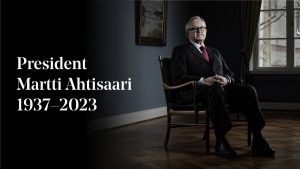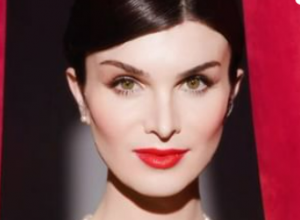With the 2020 Nobel prizes this week comes a recurrent question: has the world’s most prestigious awards for physics, chemistry and medicine — first conferred in 1901 — lost touch with the way modern science is conducted?
A century ago, landmark discoveries took place mostly in the mind or laboratory of a single individual. More recently, big breakthroughs in the hard sciences are generally collaborations involving dozens, sometimes hundreds of researchers working in separate but interlocking fields. Two teams totalling 1,500 scientists, for example, were behind the landmark detection earlier this year of a so-called intermediate-mass black hole.
Major advances in science have also become hugely reliant on technology, which is sometimes used — especially in physics — to detect phenomena theorised to exist before today’s scientists were even born. “The Nobel Committee’s refusal to make an award to more than three people had led to manifest injustices,” Martin Rees, Britain’s Astronomer Royal since 1995 and former president of the Royal Society, told AFP.
Indeed, the recent history of the Nobels is littered with what some have called “deserving losers”, a fourth man or woman who would have likely shared in the prize without that limitation. Rees cited the late Tom Kibble for his work on the elusive sub-atomic particle that came to be known as the Higgs boson.
Others lament the failure to recognise American virologist Robert Gallo for his contribution to the discovery of HIV, Rosalind Franklin for her pioneering work on DNA, and Italian physicist Adalberto Giazotto for his role in detecting gravitational waves. Giazotto died a month after the prize for that discovery was handed out in 2017.
“It has also given a misleading impression of how ‘big science’ actually advances,” added Rees, who notes the prize has excluded “large tracts of science,” including mathematics and the environmental sciences. Even the most ardent defenders of Nobel Prize and its arguably archaic rules acknowledge that science has shifted dramatically since the era of Einstein, Monsieur and Madame Curie, and Karl Landsteiner, the Austrian biologist who figured out in the 1920s that we have blood types.
“There has been an enormous change since the early 1900s,” Erling Norrby, a Swedish virologist and long-time pillar of the Nobel establishment, told AFP by phone.
“It is true that in modern science you often have very large groups of people interacting,” added Norrby, who helped confer Nobels in medicine for 25 years, and has cast votes for the prizes in physics and chemistry since the early 1980s.
“But the question is whether we can identify one or two leaders. I think we can see who has taken the initiative.” To some extent, faculty from the Karolinska Institute, which grants the Nobel for medicine, and the Royal Swedish Academy of Science, which does the same for physics and chemistry, have shifted with the times. From 1920 to 1930, 23 of 30 awards were given to an individual scientist, and in the decade after World War II solo winners numbered 19.
In the first twenty years of this century, that has only happened on four occasions, with three-way awards given out 41 times. In medicine, the number of possible recipients was expanded to three in 1934 (for the discovery of the B12 vitamin), with the first three-way prizes for chemistry and physics in 1946 and 1956, respectively.
But the rules have evolved no further, which means the Nobels cannot directly recompense the large, international experiments that have become the backbone of so much modern science. Norrby conceded that Europe’s CERN — which runs the world’s particle physics laboratory and conducted the experiments to detect the Higgs boson — would probably have shared in that Nobel if the rules had allowed, as they do for the Peace Prize.
More recent science awards have done a better job in highlighting these large collaborations, said Rees. “The Breakthrough and Gruber prizes — which honoured the discovery of gravitational waves before the Nobel Committee did — took a fairer approach in highlighting the leaders but explicitly recognising the whole team,” including monetarily, he noted. “Their approach also gave a better impression of how this project actually achieved its amazing success.”
Stavros Katsanevas, director of the European Gravitational Observatory, whose Virgo gravitational wave antenna played a key role in the science behind the 2017 physics prize, is of two minds about the Nobels. “It is difficult to identify key contributors in such global networks, this is true,” he told AFP. “But I’m afraid that if you just give the prize to an experiment and the person leading it at the moment, you will dilute the impact.”
For Katsanevas, 21st-century science stems not just from pure intellect but from having the vision, courage and organisational skills to pursue a new goal, or carve out a new discipline.
“When you try to do something new, you are considered a deserter by one camp, and an intruder by the other,” he said, noting that his has spent his career astride particle physics and astrophysics. “The fact that someone dared to take a step that others didn’t — this still needs to be recognised.”






